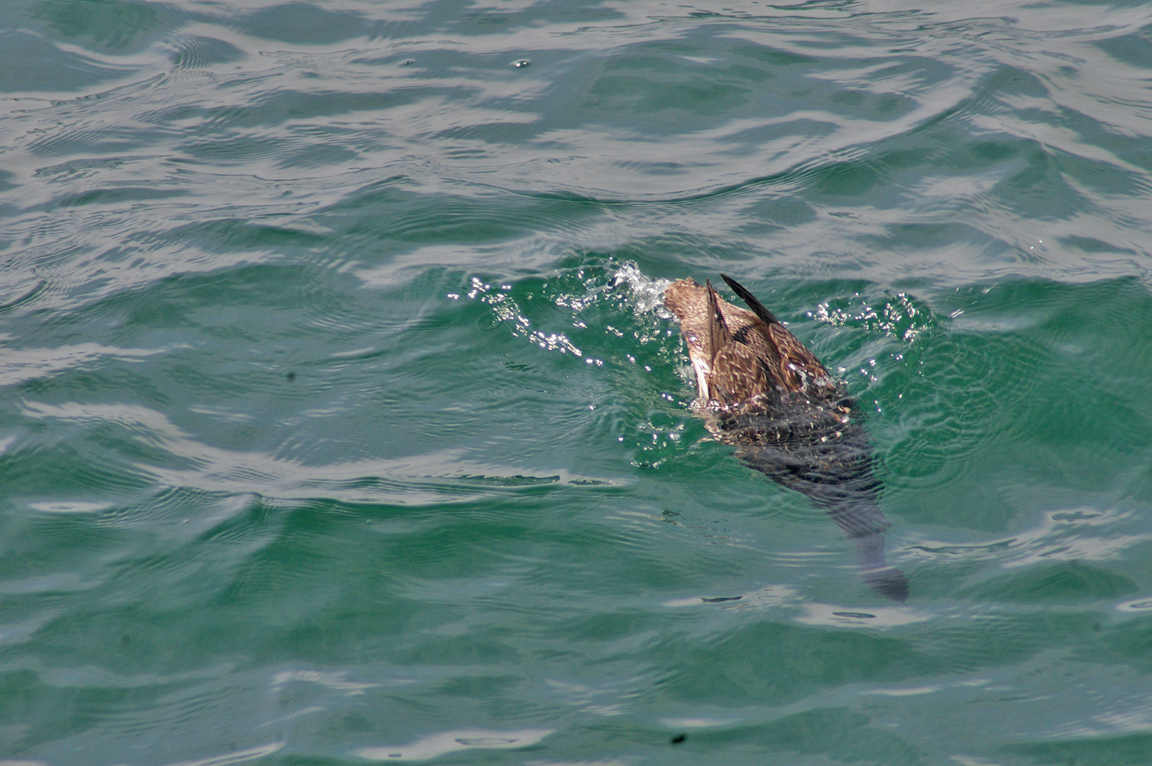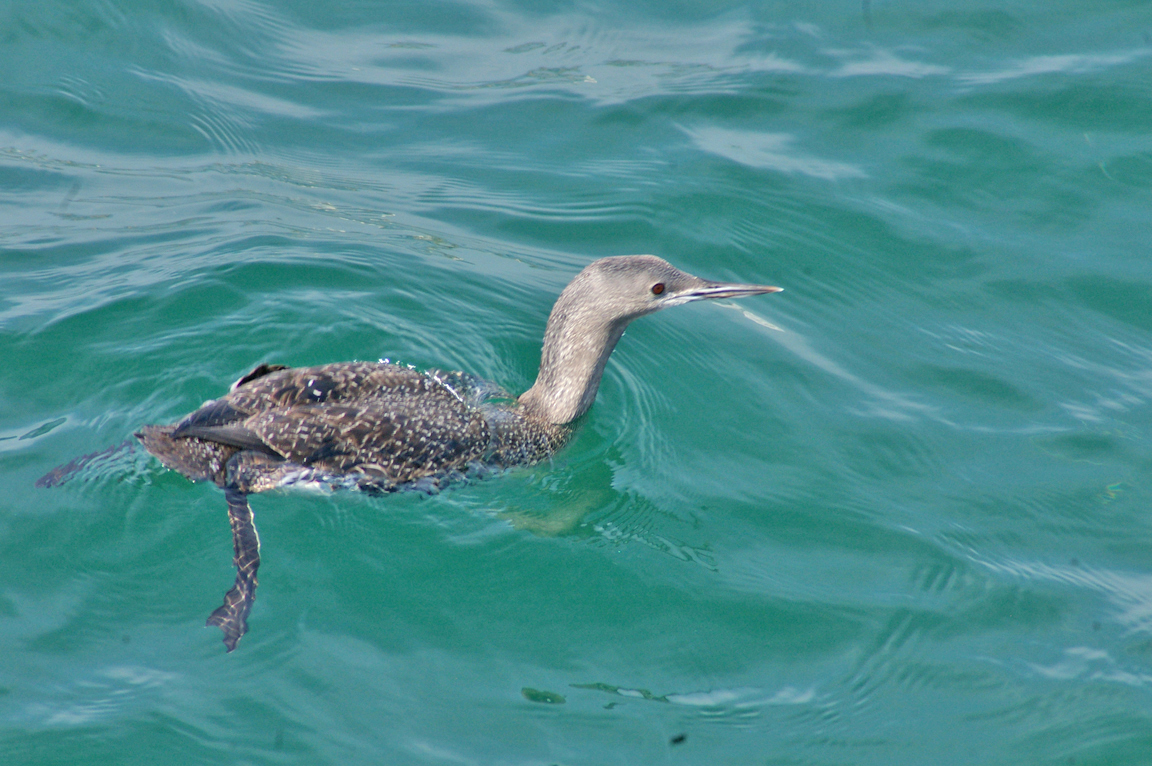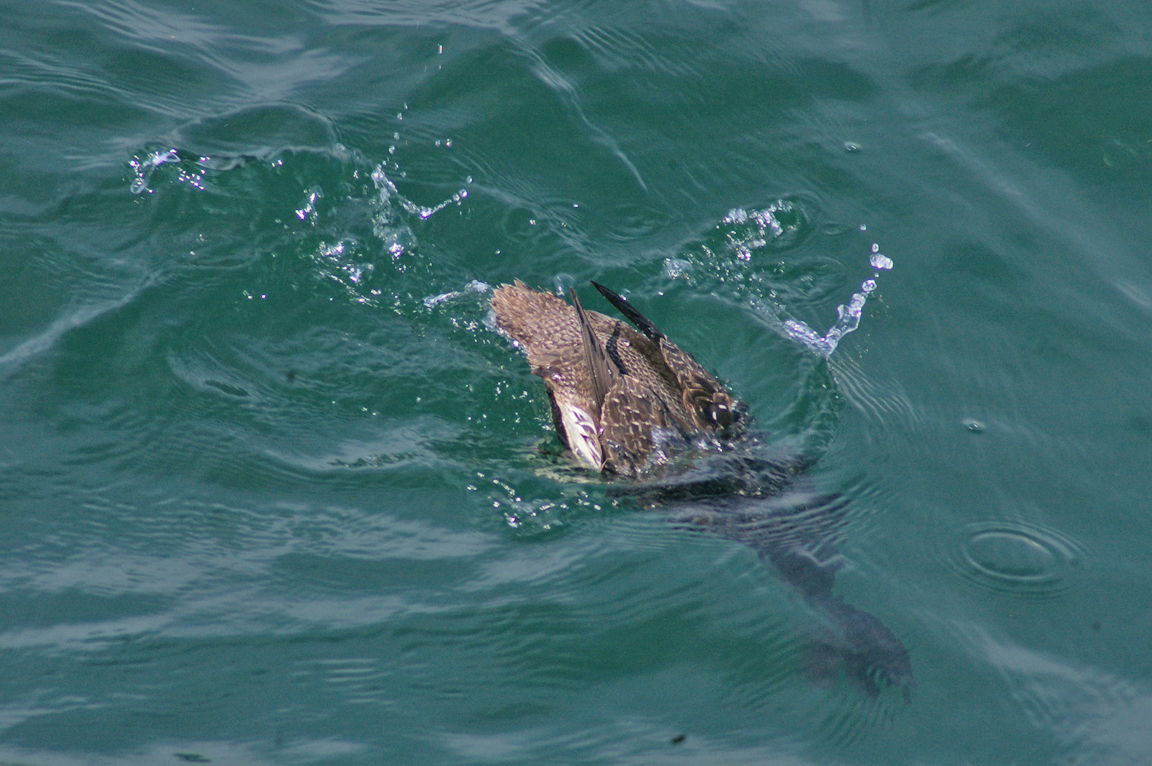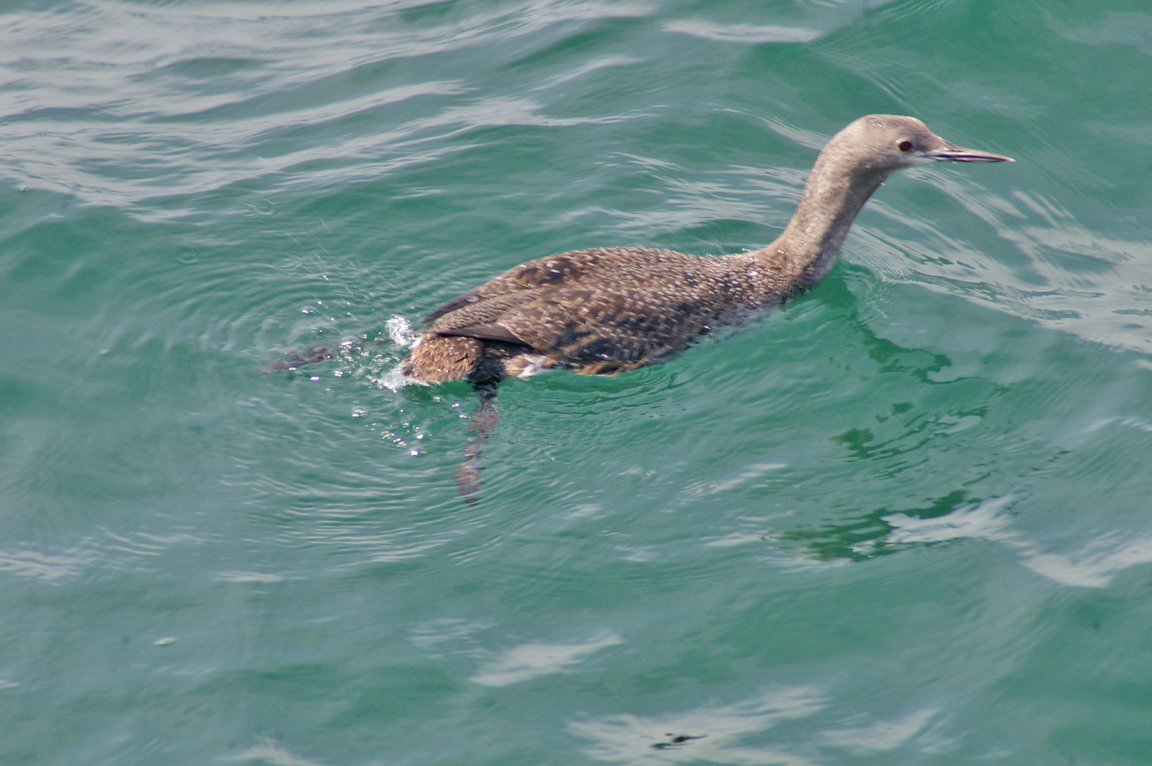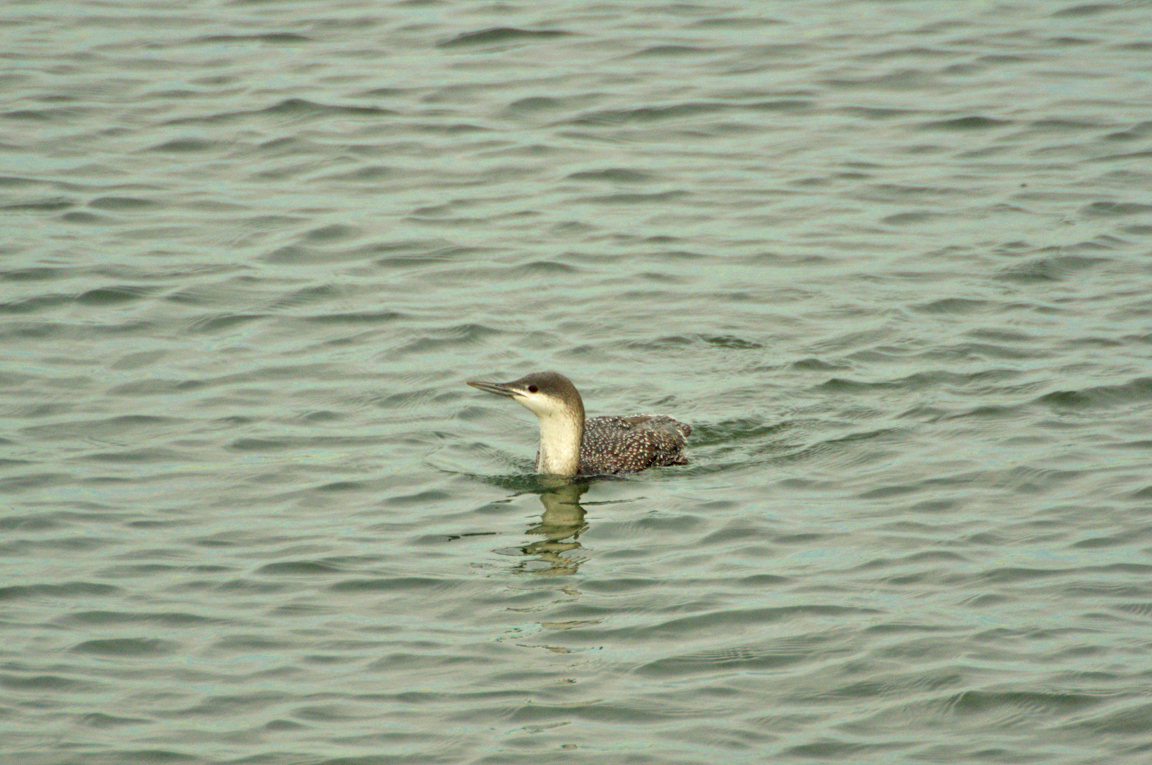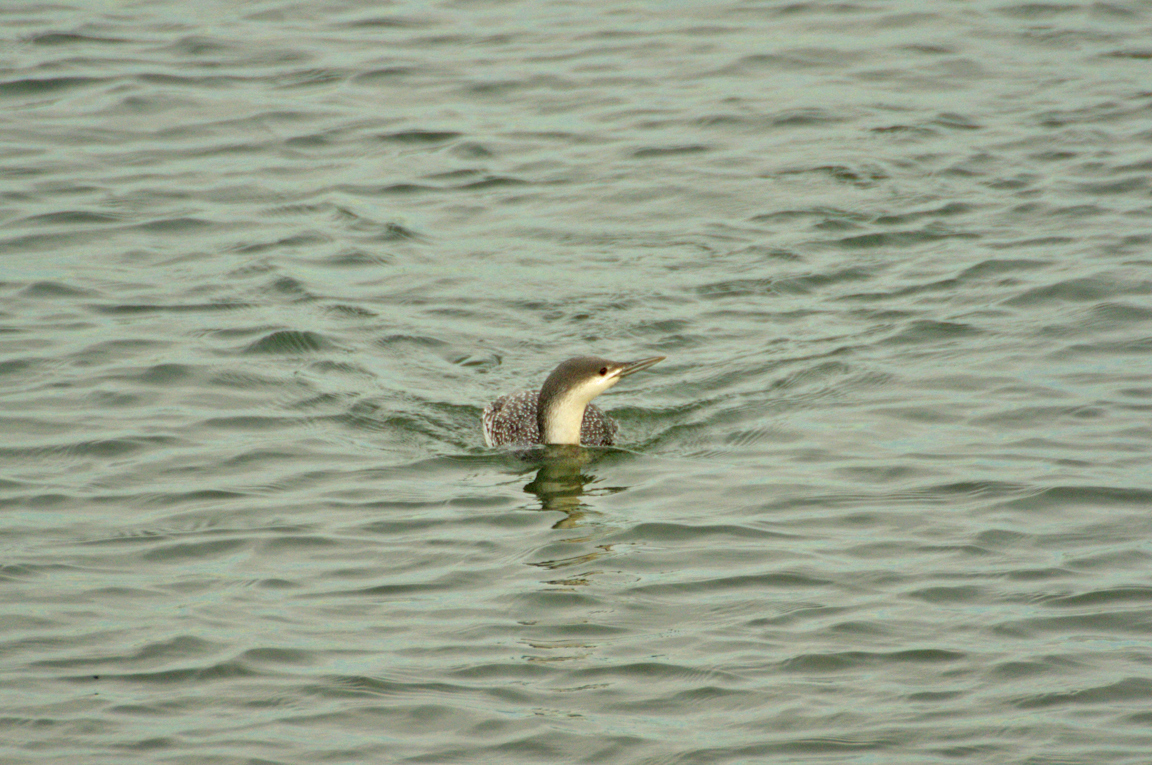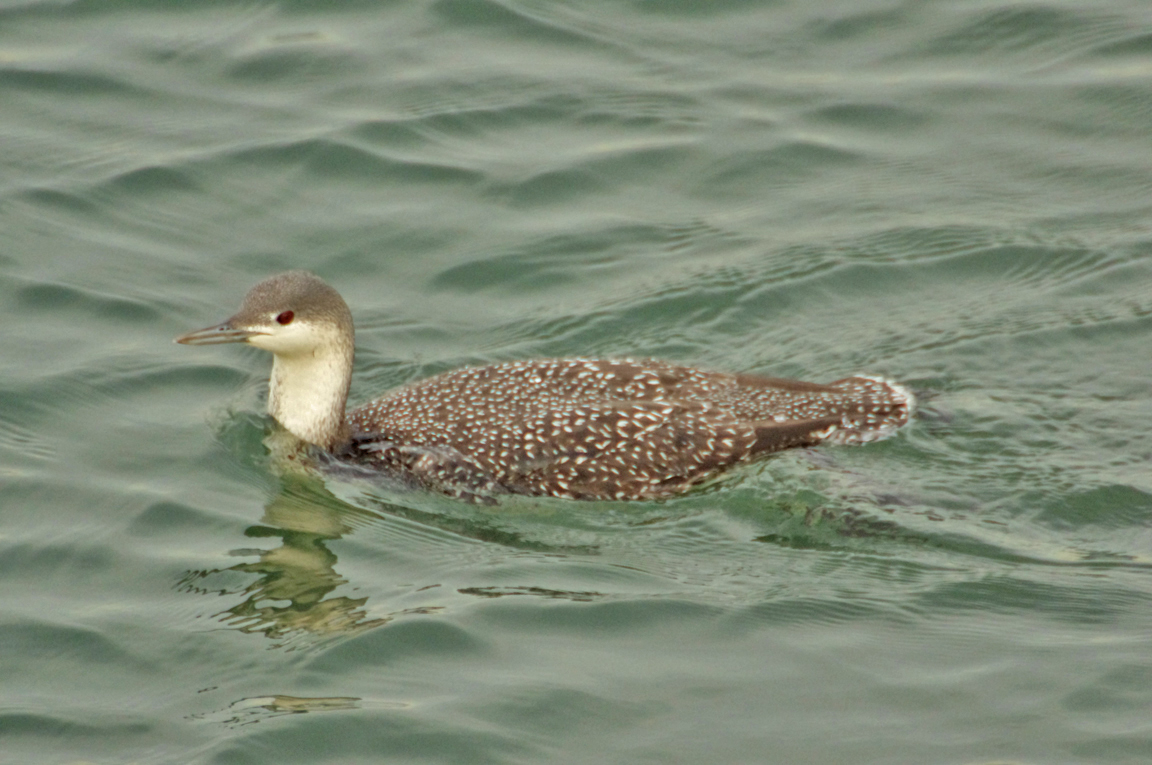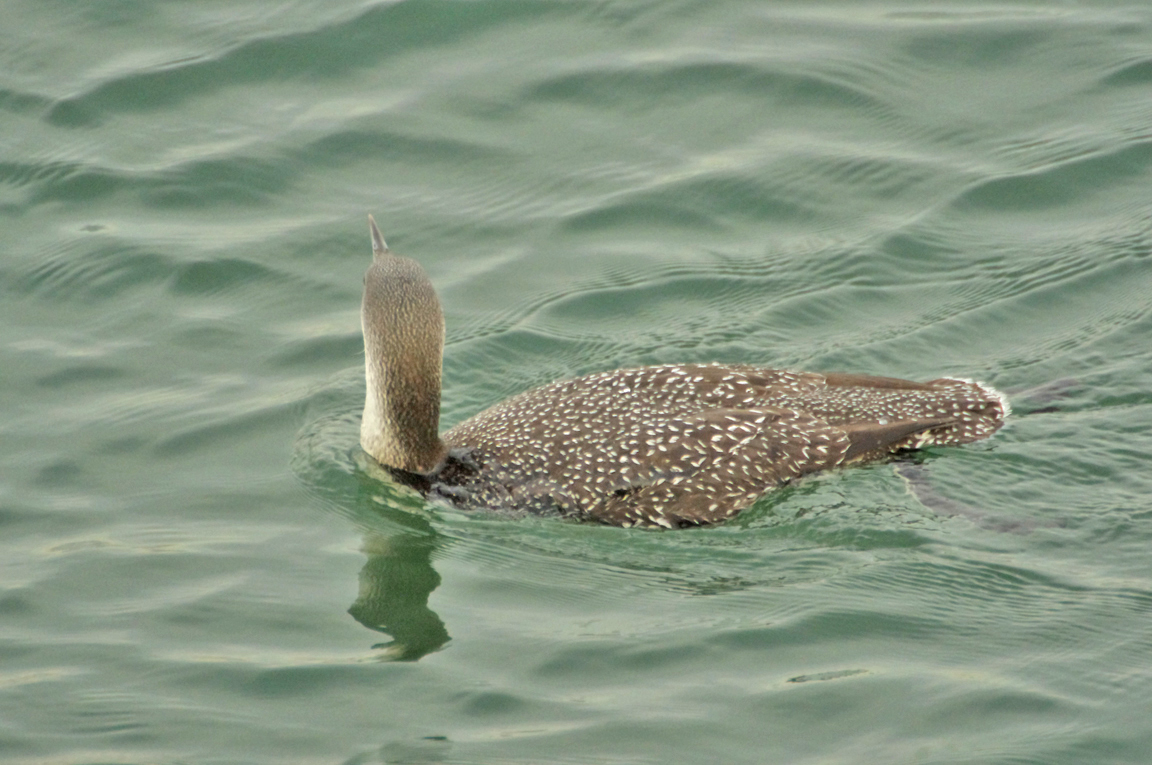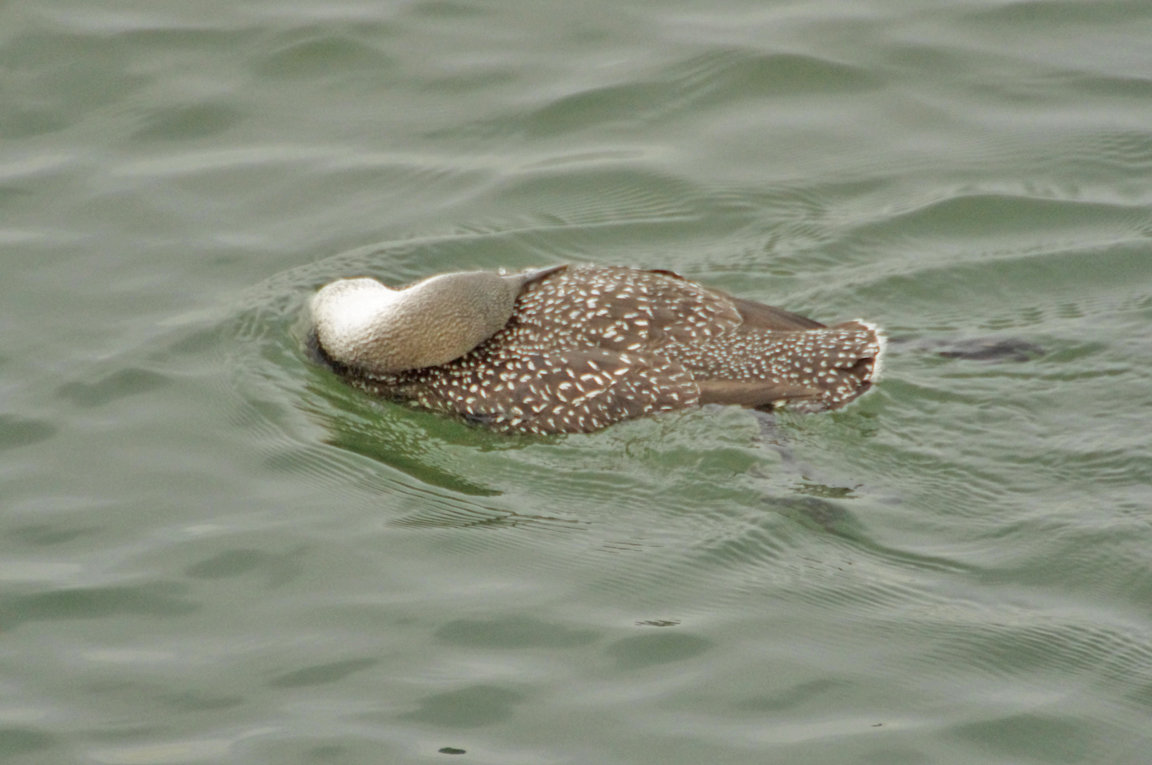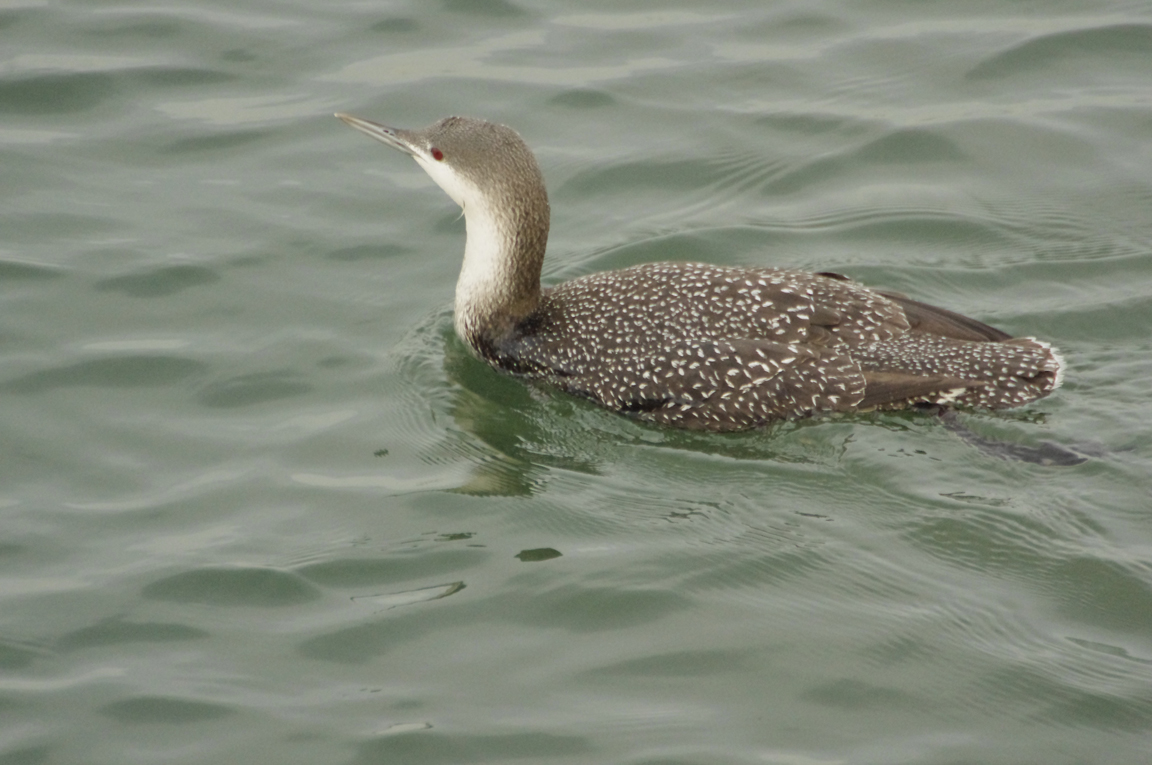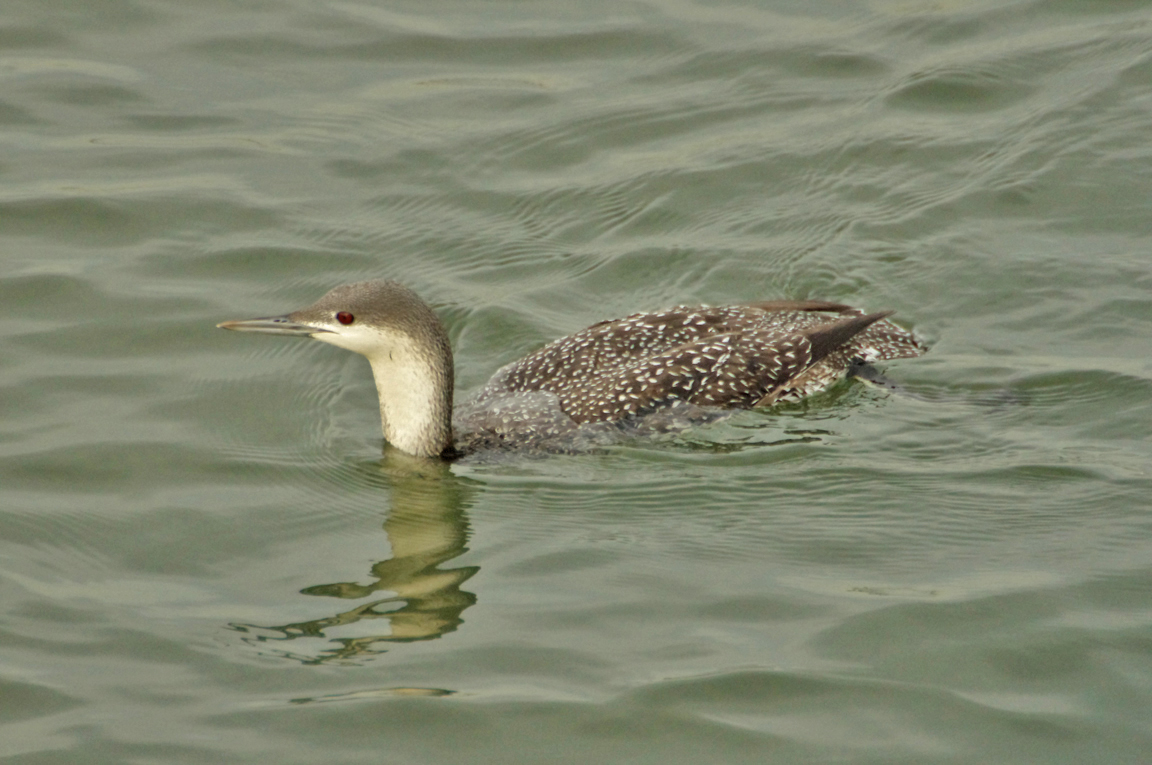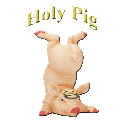|
|
|
 |
Red-throated Loon
|
| Gavia stellata | |
The smallest of the loons, the Red-throated Loon breeds at high latitudes in North America and Eurasia. It is distinctive among loons not only in size, but also in behavior, vocalizations, locomotion, and other aspects of life history.
Interesting Information
-
The Red-throated Loon, unlike other loons, does not need to patter on the water's surface on a long takeoff, but rather can take flight directly from land if necessary.
-
The Red-throated Loon is the only loon that regularly forages far from its breeding territory, returning from distant lakes or the sea with fish for the young.
-
Unlike other loons, the Red-throated Loon does not carry its young on its back.
-
Whereas only males of other loon species vocalize, both male and female Red-throated Loons make calls, often together.
Description
Adult Description
-
Size: 53-69 cm (21-27 in)
-
Wingspan: 100-120 cm (39-47 in)
-
Weight: 1000-2700 g (35.3-95.31 ounces)
-
Large waterbird, small loon.
-
Thin bill, usually tilted slightly upward.
-
Long body slopes to rear.
-
Sits low on water.
-
Relatively slim proportions overall.
-
Dives under water.
-
Dark gray with a red throat in summer.
-
Pale gray and white in winter.
Sex Differences
Sexes look alike, male slightly larger.
Immature
Juvenile and first-winter Red-throated Loons have dull blackish-gray upperparts with white feather edges. Front of neck is mottled, not clear white as on adult. Dark of top of head may extend to include the eyes.
Breeding (Alternate) Plumage
Plain dark upperparts. Pale gray head and neck. Fine black-and-white stripes running vertically from rear crown to nape. Red throat. White chest and belly. Bill black with light stripe along top, and pale tip. Eyes red. Legs all dark, or dark on backs and pale on front.
Nonbreeding (Basic) Plumage
White face, with white extending above eyes. Mostly white neck, except for narrow vertical band of black on hindneck. Fine white dots scattered over black back. White underparts; often shows white flanks above surface while swimming. Bill blue-gray, with dark top edge. Eyes red. Legs dark on back and gray on front.

Photo taken from: The Sibley Field Guide by David Allen Sibley

© 2003 Cornell Lab of Ornithology
|
Habitat |
|
Breeds in low tundra wetlands, bogs, and ponds in forests. In migration, flocks stage on large lakes. Winters in relatively shallow, sheltered marine habitat. |
|
Behavior |
|
Pursues fish under water, grabs with bill. |
|
Food |
|
Marine and freshwater fish. |
Taxonomy
| Kingdom: | Animalia |
| Phylum: | Chordata |
| Subphylum: | Vertebrata |
| Class: | Aves |
| Order: | Gaviiformes |
| Family: | Gaviidae |
| Genus: | Gavia |
| Species: | Gavia stellata |
Similar Species |
|
|
Bird Sound |
|
Calls include a simple wail covering a wide range of pitches, and a complex, unnerving "roll-growl." |
|
Eggs look like this |
|
Photo taken from: ARCTOS Collaborative Collection Management Solution |

